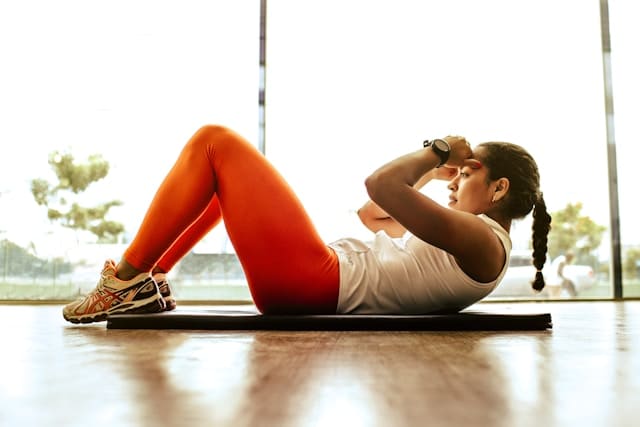How Can UK Cities Improve Public Spaces to Promote Community Fitness?

As the world continues to grapple with the numerous health challenges brought about by sedentary lifestyles and poor diet, the importance of physical activity for wellbeing is increasingly highlighted. Urban spaces, far from being the concrete jungles that we often perceive them to be, can offer an invaluable opportunity to facilitate this much-needed physical activity. In the context of the UK, creating well-designed public spaces can significantly contribute to community fitness. This article explores how UK cities might improve their public spaces to foster physical activity and promote community wellbeing.
The Value of Urban Green Spaces for Public Health
The role of urban green spaces in public health is an emerging area of interest for scholars. These spaces are not just aesthetic elements but have been shown to have a tangible impact on the physical and mental health of the local population.
Cela peut vous intéresser : Explore exciting rewards with free case opening options!
Urban green spaces like parks and community gardens encourage physical activity by providing a conducive environment for walking, running, cycling, and playing sports. Studies have shown that people living close to green spaces are more likely to engage in physical activity than those who don’t.
Furthermore, green spaces can also mitigate environmental health risks by improving air quality, reducing urban heat, and controlling flooding. They also offer a sanctuary for relaxation and social interaction, contributing to mental wellbeing and community cohesion.
A découvrir également : How Do New Textile Recycling Technologies Combat Fast Fashion Waste in the UK?
Public Space Design and Physical Activity
How public spaces are designed plays a critical role in people’s willingness and ability to engage in physical activity. An environment that feels safe, accessible, and welcoming can encourage even the most sedentary individuals to move more.
The concept of ‘active design’ is gaining traction among urban planners. This approach incorporates elements that encourage physical activity into the design of urban spaces. This might include widening and improving pavements for walking and cycling, incorporating staircases in outdoor spaces, and designing attractive, accessible parks and playgrounds where people of all ages can engage in leisure and sports activities.
Public spaces should also be designed with inclusivity in mind. This means considering the needs of different demographic groups, including children, the elderly, people with disabilities, and those from disadvantaged backgrounds. Providing equipment and facilities that cater to a wide range of physical abilities and interests can help to ensure that everyone feels encouraged and able to participate in physical activity.
The Role of Local Authorities in Promoting Community Fitness
Local authorities have a pivotal role to play in promoting community fitness. They are often the ones who manage public spaces and have the power to implement changes that can make these spaces more conducive to physical activity.
This can involve a range of strategies, from implementing active design principles in new developments, to refurbishing existing spaces, to organising events and initiatives that encourage people to get active. For example, local authorities could run exercise classes in parks, promote walking and cycling routes, or organise community sports tournaments.
Furthermore, local authorities can also implement policies that prioritise pedestrian and cyclist movement over car use, thereby facilitating active travel. This can be achieved through measures such as reducing speed limits, creating pedestrian-only zones, and providing secure cycle parking.
Importantly, efforts to improve public spaces should be underpinned by ongoing dialogue with the community. This will ensure that changes meet the needs and preferences of the people who use these spaces, thereby increasing the likelihood that they will be utilised for physical activity.
Enhancing Social Interaction Through Public Spaces
Public spaces not only promote physical health but also play a crucial role in fostering social interaction. A well-designed public space can become a meeting point for the community, helping to strengthen social ties and create a sense of belonging.
Benches, picnic tables, BBQ facilities, and outdoor stages can all bring people together and create opportunities for interaction. Playgrounds and sports facilities can also encourage social interaction among both children and adults. Meanwhile, community gardens can foster a sense of shared responsibility and cooperation.
Public spaces can also host a variety of events, from fitness classes to concerts to markets, all of which can bring people together and foster a sense of community. These social benefits of public spaces should not be overlooked, as they can significantly contribute to overall wellbeing and quality of life.
Community Empowerment Through Public Space Management
Public spaces belong to everyone, and as such, everyone should have a say in how they are managed and used. Inviting community members to participate in decision-making processes around public spaces can empower them and ensure that these spaces meet their needs and desires.
This could involve communities in the planning and design process, asking for their input on what facilities and features they would like to see. Alternatively, communities could be tasked with managing certain aspects of public spaces, such as maintaining gardens or organising events.
Not only can this empower individuals and foster a sense of ownership and pride, but it can also ensure that public spaces are effectively used and loved. After all, people are more likely to use and look after spaces that they feel they have a stake in.
In conclusion, the design and management of public spaces can have a significant impact on community fitness. By creating attractive, inclusive, and engaging spaces, we can encourage more people to get active and reap the health benefits of physical activity. However, it is essential that these efforts are underpinned by community involvement, to ensure that public spaces truly serve the needs and desires of the people who use them.
Utilising Active Travel for Community Fitness
Active travel, such as walking or cycling, is a form of physical activity that can be seamlessly integrated into daily life. It is an area where public spaces and urban design can significantly influence community fitness. Promoting active travel can assist in the transformation of UK cities into healthier, more liveable environments.
Active travel relies heavily on the availability of safe and well-connected routes. Urban planning can play a vital role in making active travel viable and attractive. The implementation of bike lanes, pedestrianised zones, and improved crosswalks can make walking or cycling safer and easier. Moreover, attractive streetscapes, including greenery and public art, can enhance the experience of active travel and encourage more people to embrace it.
Research published in international journals, such as the American Journal of Preventive Medicine, suggests that active travel can contribute to better public health outcomes. Walking or cycling as part of daily routines not only promotes physical activity but also reduces exposure to air pollution by reducing car use.
Moreover, according to a study found on Google Scholar, people who incorporate active travel into their routines tend to have lower rates of obesity and diabetes. These findings underline the crucial role that local authorities can play in enhancing community fitness through urban planning and design.
Transforming Unused Spaces for Community Fitness
Unused or underutilised spaces in urban environments can be transformed into venues for physical activities. From vacant lots to abandoned buildings, these spaces can be repurposed into gyms, sports facilities, or parks. Repurposing unused spaces is a cost-effective way to provide additional opportunities for physical activity and contribute positively to public health.
The transformation of unused spaces for community fitness goes beyond just providing space for physical activities. It can also serve as a catalyst for community engagement. By inviting local residents to participate in the planning and design process, we can foster a strong sense of ownership and pride in these spaces.
Moreover, such community participation can ensure that the redesigned spaces cater to the specific needs and preferences of the local community. For instance, if the community has a high proportion of elderly residents, the space could be designed to include low-impact exercise equipment suitable for them.
In conclusion, transforming unused spaces is not just about enhancing the built environment. It also offers a unique opportunity to empower communities and inspire them to lead active, healthy lifestyles.
Conclusion
The improvement of public spaces to promote community fitness in UK cities requires a multifaceted approach. Well-designed green spaces, active travel infrastructure, and the transformation of unused spaces can all contribute to creating an environment that fosters physical activity.
Active involvement from local communities in decision-making processes is crucial to ensure that these initiatives cater to the specific needs and preferences of the residents. Involving community members can also foster a sense of ownership and responsibility towards these public spaces.
The benefits of such initiatives extend beyond just physical health. They can also enhance social cohesion, environmental sustainability, and overall quality of life. In these challenging times, it is more important than ever to utilise our public spaces effectively to promote health and wellbeing. By doing so, we can transform our cities into vibrant, healthy, and connected communities.
